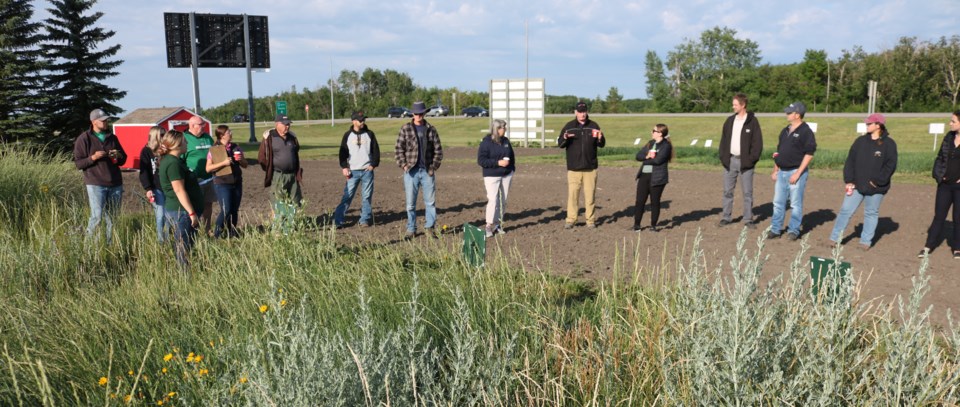YORKTON - Crops of the Parkland have been a long-time feature adjacent to the Tourism Yorkton offices on Highway #9.
“We established it close to 30 years ago,” explained Thom Weir one of the project organizers during a plot tour Thursday.
Weir said the plots were in response to questions from tourists “asking what is that yellow crop? What is that blue crop?”
The plots allow tourists to stop, and actually walk down a row showing samples of more than 20 crops ranging from potatoes to wheat, canary seed to canola, pinto beans to oats.
The crops are ones “that are grown in the province,” said Weir, adding not all are grown locally in the parkland.
The crop plots this year were planted and are being maintained by Bayer Crop Science. In addition to the crop plots, this is the second season for plots of forage crops established through Agriculture Demonstration of Practices and Technologies (ADOPT).
The ADOPT program provides funding to help producer groups and First Nations communities demonstrate and evaluate new agricultural practices and technologies at the local level. The results of successful trials can then be adopted by agricultural operations in the region.
Established in 2022, this is the year the forage plots are really showing what they offer.
The plots were established as a resource for producers and agrologists to have a place for real time evaluation of the various forages, explained spokesperson Kaitlyn Murphy.
There are 29 forages highlighted in the plots, which had their first public showing with the gathering July 6.
Murphy, who is also a cattle producer, said the plots are interesting because of their diversity.
“There are species here I’ve never seen before,” she said, adding being able to see them in person is helpful when considering what forages might be best-suited to local producer mixes.

